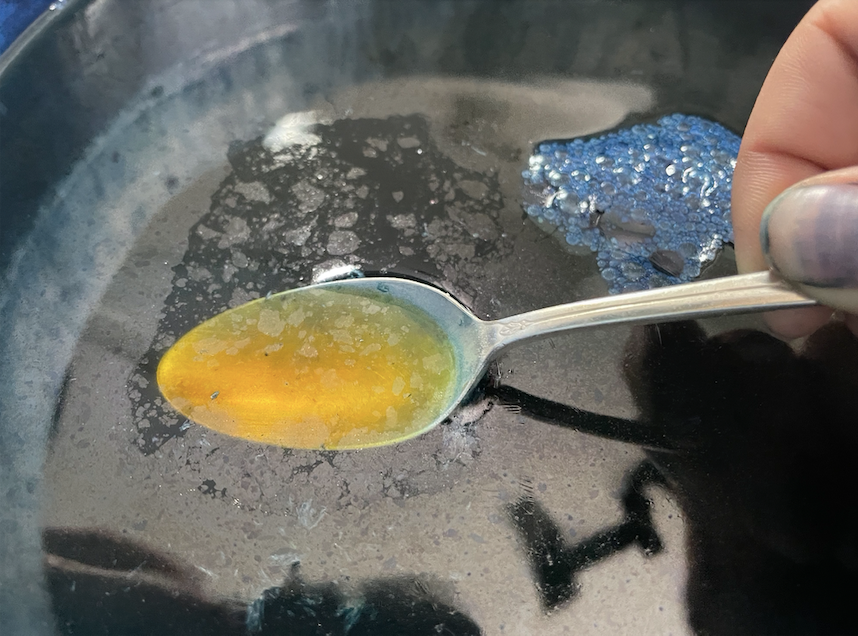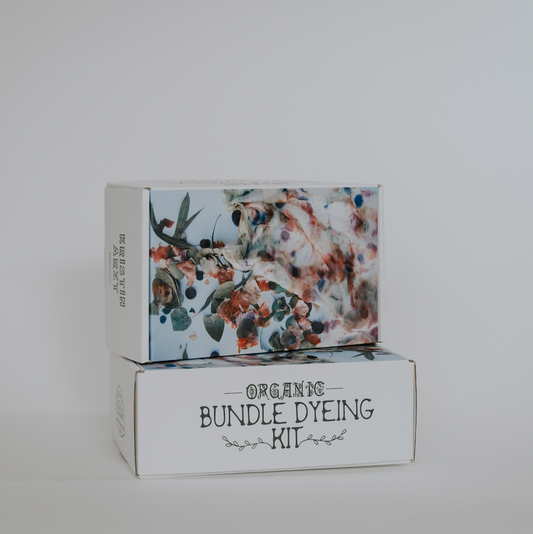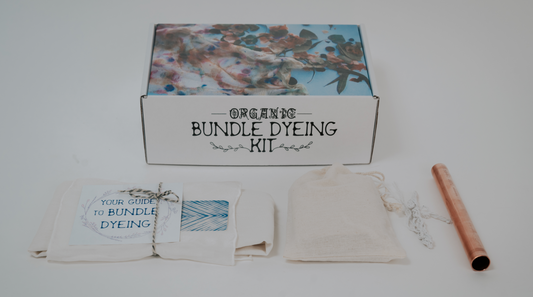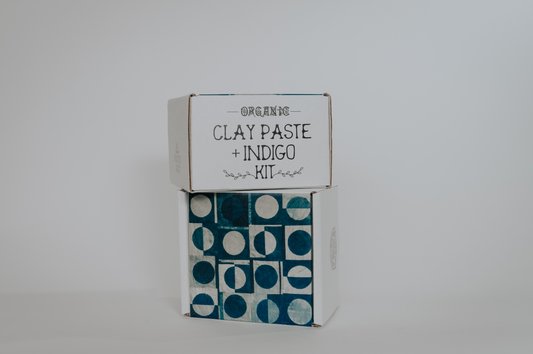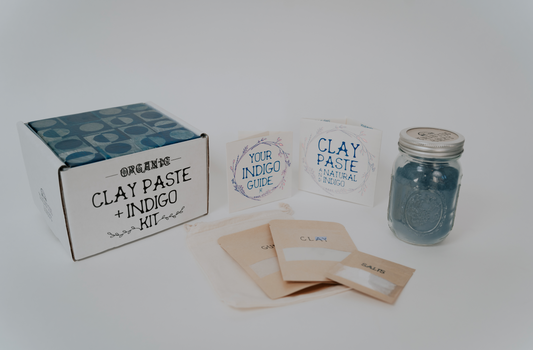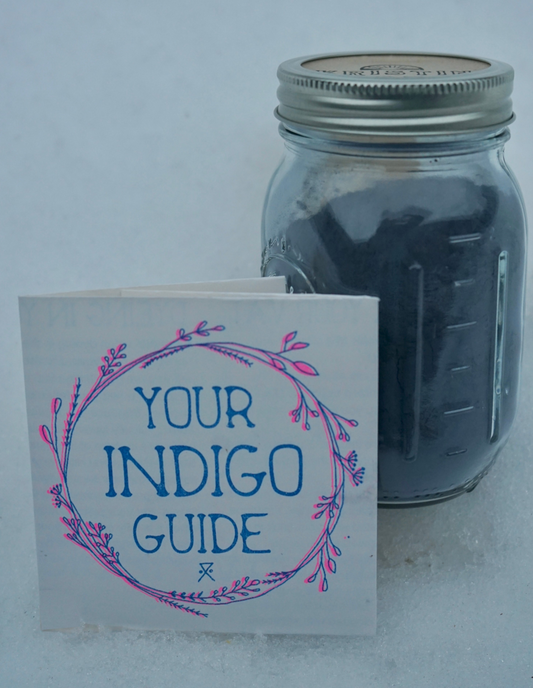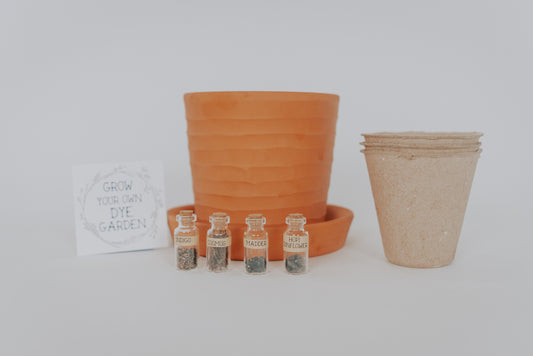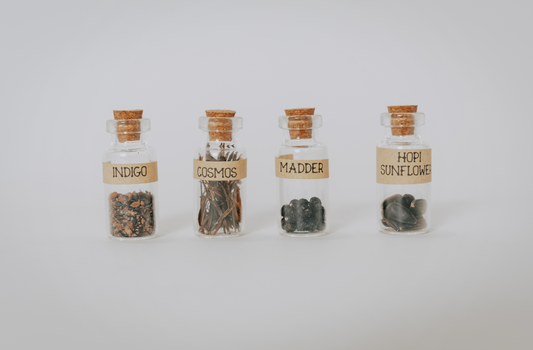Indigo Vat Troubleshooting FAQs
What does it mean if your indigo vat liquid is colorless?
If your vat liquid is clear, it needs more of your reducing agent and you probably need to check the pH. If it is clear water or blue, your vat isn’t reduced, so add more fructose powder. If the liquid is yellow/amber, your vat is reduced.
What does it mean if you indigo vat is cloudy?
It is not reduced yet. You first can bring your vat into reduction by adding more of your reducing agent (fructose powder). If that doesn't seem to work, try warming with an electric blanket or aquarium heater. Usually, the answer is to check it, wait, check it, wait, test strip, wait, stir it, and wait. If you have a dormant vat that has been sitting for weeks or months, sometimes they take days to come back.
When adding hot water, do you dilute the indigo?
You cannot dilute indigo—whether it is a 1 gallon, 5, or 50-gallon container. In reality, it is about how many grams of indigo you have in your vat.
How much fabric can I dye?
In our
natural indigo kit, there are 50 grams of natural indigo pigment.
Botanical Colors shares a great hint on how many grams of indigo will dye how many grams of fiber: “A rounded tablespoon of indigo weighs approximately 6 grams, which is enough to dye about 200 grams of fiber (or, roughly 7 ounces of fiber, or 2 small t-shirts) a medium-dark color with 2, 5-minute dips.” With that, you can dye about 7 t-shirts a medium-dark color with this kit.
What about the size of my indigo vat?
The size of your vessel is relative to the size of your fiber. You need something like a garbage can for yardage. If you are dyeing t-shirts or bandanas, a 5-gallon vat is perfect. It is just about moving your fiber freely in the vat space.
Your indigo vat will get tired after a long day of dyeing. You might notice that you can no longer achieve deep, dark blues and you may also notice the vat liquid is no longer clear, but cloudy. These are signs that your vat needs to rest.
How to Close Up Your Vat After Dyeing
Add any liquid from your drip bucket back into your vat. This contains un-reduced indigo pigment. You can also add hot water to your vat to increase the liquid level.
Add about 1 tablespoon of fructose and stir in a circular motion, bringing your flower back to the center of the vat. You can also use cooked down bananas, pears, wheat bran, madder root, and more to feed your vat- in place of the fructose powder.
Cover your vat with a lid and let it rest overnight.
If you have left your vat unused for a few days, you can also add fructose and hot water to bring it back to life.
To dispose of the vat add 1-2 cups white vinegar - until it is pH neutral- stir and dump it down the drain, or compost in your garden.




